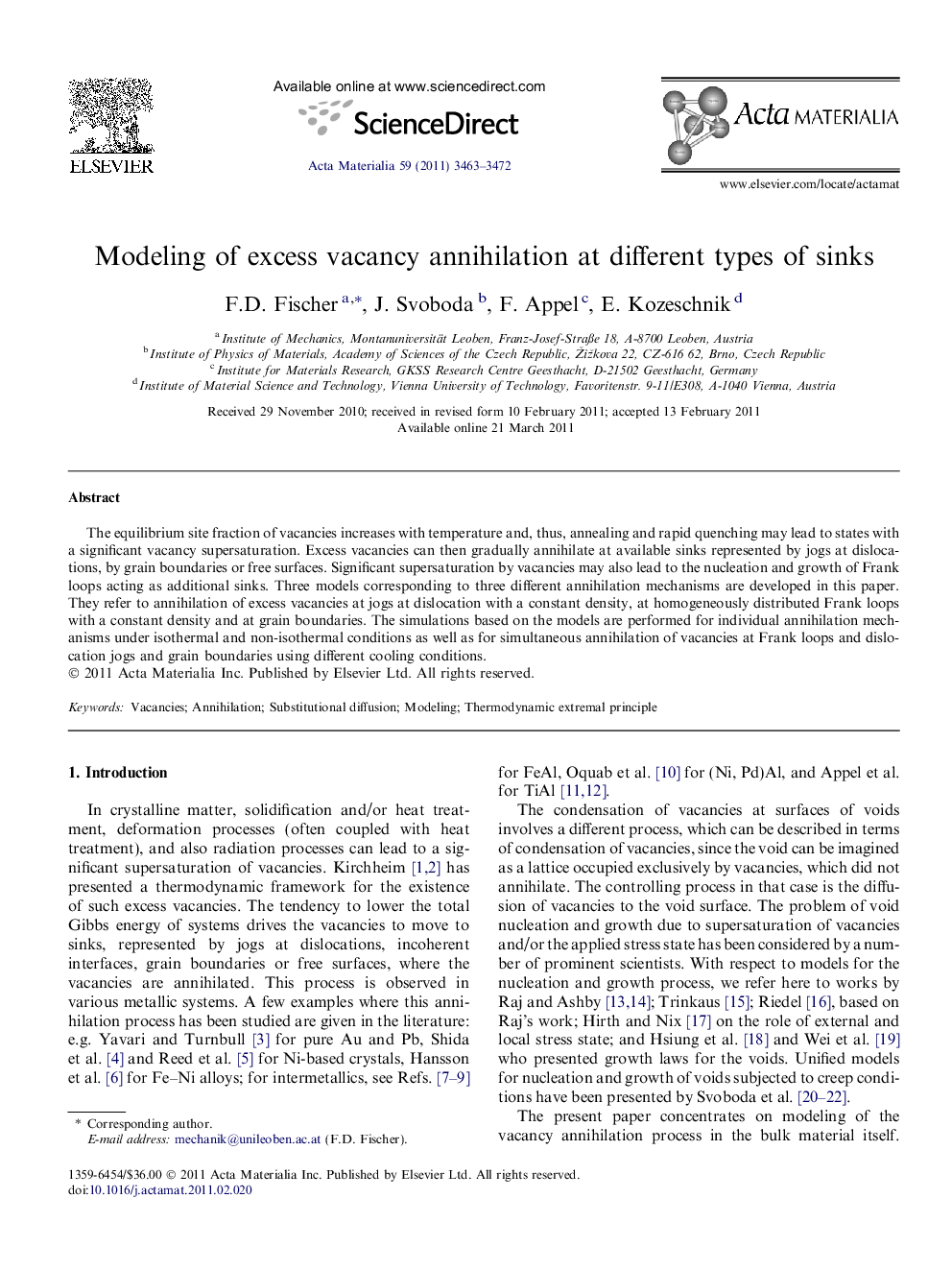| Article ID | Journal | Published Year | Pages | File Type |
|---|---|---|---|---|
| 1447144 | Acta Materialia | 2011 | 10 Pages |
The equilibrium site fraction of vacancies increases with temperature and, thus, annealing and rapid quenching may lead to states with a significant vacancy supersaturation. Excess vacancies can then gradually annihilate at available sinks represented by jogs at dislocations, by grain boundaries or free surfaces. Significant supersaturation by vacancies may also lead to the nucleation and growth of Frank loops acting as additional sinks. Three models corresponding to three different annihilation mechanisms are developed in this paper. They refer to annihilation of excess vacancies at jogs at dislocation with a constant density, at homogeneously distributed Frank loops with a constant density and at grain boundaries. The simulations based on the models are performed for individual annihilation mechanisms under isothermal and non-isothermal conditions as well as for simultaneous annihilation of vacancies at Frank loops and dislocation jogs and grain boundaries using different cooling conditions.
► The kinetics of generation and annihilation of vacancies is modeled. ► Dislocation jogs, grain boundaries and Frank loops act as sources and sinks. ► The kinetics is determined by the densities of considered objects. ► The vacancy concentration kinetics reflects the thermo-mechanical treatment.
